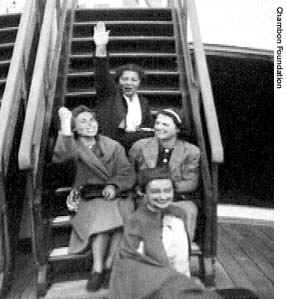 |
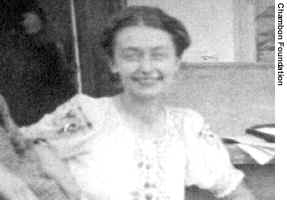 |
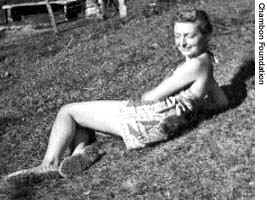 |
| Miriam Davenport Ebel
(front) on boat to Europe with clowning shipmates |
Miriam Davenport Ebel in Marseille in 1940 |
Miriam Davenport Ebel after the war |
[Varian Fry Institute Home] [Chambon Foundation Home]
 |
 |
 |
| Miriam Davenport Ebel
(front) on boat to Europe with clowning shipmates |
Miriam Davenport Ebel in Marseille in 1940 |
Miriam Davenport Ebel after the war |
Miriam Davenport Ebel's memoir An Unsentimental Education
Miriam Davenport Ebel died of cancer in Mt. Pleasant, Michigan, September 13, 1999. For several months in 1940, she worked closely with Varian Fry in Marseille, France, helping to save many endangered artists, intellectuals and anti-Nazi refugees.
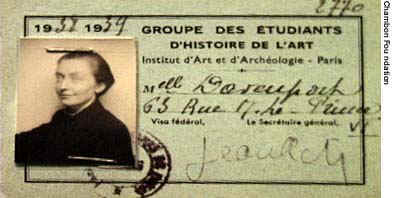 Born in Boston, Massachusetts,
June 6, 1915, Miriam Davenport had studied art and
architecture history at Smith College before spending a year at in N. Y. U.'s
Graduate Institute of Fine Arts. Her parents had died during her last
two years of undergraduate studies, leaving large debts and a young
brother. Leaving for France, she pursued her studies on a Carnegie summer
art scholarship, and then at the tuition-free University of Paris' Institut
d'Art et d'Archéologie, also taking painting classes with cubist Andre
Lhote.
Born in Boston, Massachusetts,
June 6, 1915, Miriam Davenport had studied art and
architecture history at Smith College before spending a year at in N. Y. U.'s
Graduate Institute of Fine Arts. Her parents had died during her last
two years of undergraduate studies, leaving large debts and a young
brother. Leaving for France, she pursued her studies on a Carnegie summer
art scholarship, and then at the tuition-free University of Paris' Institut
d'Art et d'Archéologie, also taking painting classes with cubist Andre
Lhote.
During the German invasion of France in May, 1940, with the Sorbonne closing down, Ebel was unable to get expired passport and identity card renewed, until helped by French friends, she managed to get an ID card renewed for transfer of study to University of Toulouse. At this time, Charles Wolff, a journalist neighbor of a friend, expressed the opinion that Germans would be in Paris in seven to ten days. Ebel left the next day for Toulouse on the last train to run on time.
Charles Wolff soon turned up himself in Toulouse. Through him, after the terms of the Armistice became known, she met Walter Mehring, the poet high on Hitler's wanted list, Konrad Heiden, Hitler's unflattering biographer, and Katia Landau, whose husband had been murdered by the Barcelona Communists.
Ebel later remembered that Wolff, Heiden, and Landau, had said that their only hope and that of others in their situation was to be "wrapped in the American flag." Ebel took it upon herself to go to Marseille, the main city in the unoccupied zone of France, to find out how to go about this.
Ebel also met an American expatriate heiress, Mary Jayne Gold, and they soon became fast friends, united in their desire to do something for the threatened refugees. Nothing much seemed possible until Walter Mehring learned of the arrival in Marseille of an American named Varian Fry, and sent Ebel to him for help. On Aug. 27, 1940, less than two weeks after Fry's arrival, Ebel was invited to join Fry's staff. Later she persuaded a reluctant Fry to accept Mary Jayne Gold too as a staffer, and also recommended future staffers Jean Gemahling and Daniel Bénédite and the latter's British wife Theodora.
Ebel liked to recall that her three-year residence in Tenney House, a cooperative for sixteen students at Smith College, had interesting consequences at this time for both the staff and the "clients" of the Centre Américain de Secours—Fry's newly founded American Relief Center. Ebel's happy memories of cooperative living at Smith persuaded Mary Jayne Gold and Theodora Bénédite that renting an immense house, Villa Air-Bel, as a shared expense “residential hotel” would be a great improvement on the tiny villa that they had had in mind. Thus the famous last gathering place of the Surrealists came about. Miriam's clients, the André Bretons and Victor Serge and his family, moved right in on the first night.
At the very end of October, planning to return shortly, Miriam left for Ljubljana, Yugoslavia, hoping to rescue and bring to France her desperately ill fiancé. The French refusal to grant her a visa frustrated all attempts to return. In April 1941, following the annexation of Ljubljana by Italy, she and her fiancé were secretly married. After much work and many close calls, the couple managed to sail from Lisbon for the USA on the Friday following Pearl Harbor.
At home, she worked for various worthy causes: public relations and fund-raising for the International Rescue and Relief Committee, the Progressive Schools Committee for Refugee Children, the NAACP Legal Defense and Educational Fund, and for the H. L. Oram public relations firm. Later she worked for the American Council of Learned Societies' Committee for the Protection of Cultural Treasures in War Areas, preparing maps and lists for the Armed Forces to prevent unnecessary bombing and looting. She also established a photographic archive for the A. C. L. S. of subsequent damage discovered upon liberation.
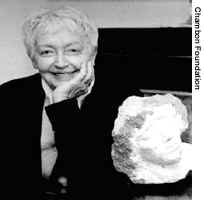 |
|
| Miriam Davenport Ebel and her art |
sculpture by Miriam Davenport Ebel |
After marrying Professor William L. M. Burke, a wartime colleague and the Director of the Index of Christian Art at Princeton, Ebel managed the Princeton office of the Emergency Committee of Atomic Scientists for Albert Einstein. Later she helped Professor Frederick Stohlman with his work on Limoges champleve enamels. In 195l the Burkes moved to the University of Iowa where Miriam promptly began graduate work in art to become, in two years, an exhibiting and prize-winning painter and sculptor.
Suddenly widowed in 1961 and pressed for funds, she began teaching art and French to her farming neighbors' children in Riverside, Iowa. There she met and married Charles Ebel, an archaeologist and a scholar in ancient history, also returning to the University of Iowa where, while teaching French, she earned a Ph.D. in 1973. Later, the Ebels moved to Michigan, where Dr. Ebel is Professor of History at Central Michigan University. Miriam, in her free time, continued research and publishing in French 18th century literature, doing a French thesis on the 18th century French writer Crébillon fils.
A witty and shrewd raconteur, blessed with an astonishing memory for detail, Miriam Davenport Ebel was an active participant in all projects and public events relating to the Fry mission, and will be a key figure in Pierre Sauvage's upcoming feature documentary about the mission, And Crown Thy Good: Varian Fry and the Refugee Crisis, Marseille 1940-41. She had a particular fondness for the fields of Iowa, where she had lived happily with Dr. Burke and later Dr. Ebel. It was near these fields that she was put to rest on a beautiful day in September 1999.
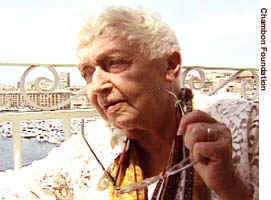 |
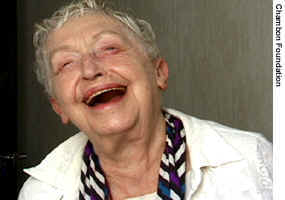 |
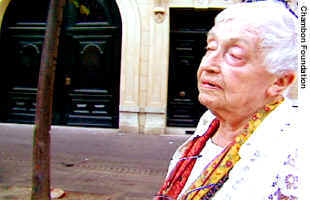 |
| overlooking Marseille's vieux port | enjoying some fond memories | outside the former U. S.
Consulate in Marseille |
[Varian Fry Institute Home] [Chambon Foundation Home]
[email us] [contact information] [table of contents] [search] [feedback] [guest book] [link to us?]
© Copyright 2006. Chambon Foundation. All rights reserved. Revised: June 03, 2009